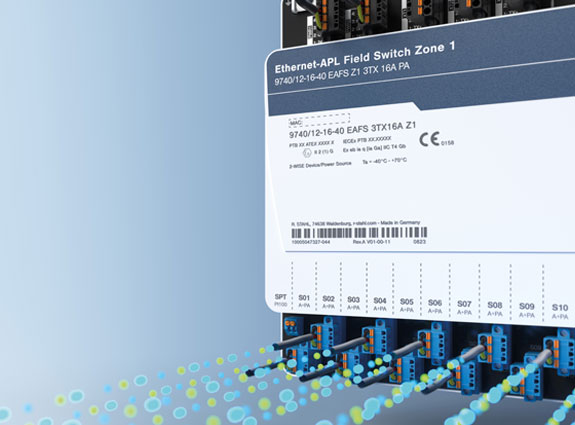- Provide good ventilation! Gaseous hydrogen evaporates quickly. Effective ventilation prevents it from building up, which would increase the risk of an explosion and cause breathing difficulties.
- Use suitable personal protective equipment! Ice-cold hydrogen (liquid or evaporating hydrogen) can cause severe injuries in the form of cold burns.
- Regularly inspect the vacuum insulation on pipelines and containers in which liquid hydrogen is present! Air can condense on poorly insulated areas and liquid oxygen represents a high fire risk.
- Avoid the formation of an explosive mixture of hydrogen and air/oxygen! Mixtures with a hydrogen content between 4 vol% and 77 vol% in air can explode.
- Avoid ignition sources! As soon as an explosive mixture forms, it can be ignited at any time by hot surfaces, sparks and other varied sources of energy.
- As the operator, establish a zone plan for your hydrogen system! From Zone 0 to Zone 2, or – if not necessary – no zone classification at all – any combination is possible near systems that generate or use hydrogen. The only way to provide corresponding explosion protection is to be informed.
- Ensure that systems are properly equipped with devices that are suitable for the relevant zone and approved according to the applicable explosion protection guidelines! To be on the safe side, portable devices and equipment should be suitable for Zone 0, where potentially explosive atmospheres are often present.
- Only extremely high-quality, appropriately selected materials prevent leaks! This must also be considered when selecting spare parts.
- Look out for pale flames in the event of a potential hydrogen fire! Hydrogen burns with an almost colourless flame. However, it is extremely hot and can reach lengths of up to 30 m. Use a thermal imaging camera, if appropriate, or a water mist to make the flame visible.
In summary: Hydrogen can support the ongoing energy revolution
This list can never be exhaustive. System and equipment engineers, as well as system operators, who deal with the generation and use of hydrogen must know the applicable regulations inside out and ensure compliance with them at all times. However, one thing has hopefully been made clear: Although hydrogen is a dangerous gas, these hazards can be overcome, just as the dangers of many other gases, such as propane, butane and natural gas, i.e. methane, have been mastered. It is equally important to ensure awareness of the properties and risks of cryogenic hydrogen. However, this also applies to liquid nitrogen and cold carbon dioxide. The unique safety-related properties of hydrogen are certainly no reason to overlook it as a key element in the energy revolution.






![[Translate to Englisch:] [Translate to Englisch:]](/fileadmin/user_upload/mitarbeiter/01_DE/07_Blog/00_Allgemein/blog-explosionsschutz-rstahl-startseite-279x205.jpg)
![[Translate to Englisch:] [Translate to Englisch:]](/fileadmin/user_upload/mitarbeiter/01_DE/07_Blog/00_Allgemein/blog-explosionsschutz-rstahl-ueber-den-blog-279x205.jpg)
![[Translate to Englisch:] [Translate to Englisch:]](/fileadmin/user_upload/mitarbeiter/01_DE/07_Blog/00_Allgemein/blog-explosionsschutz-rstahl-autoren-279x205.jpg)
![[Translate to Englisch:] [Translate to Englisch:]](/fileadmin/user_upload/mitarbeiter/01_DE/07_Blog/00_Allgemein/blog-explosionsschutz-rstahl-newsletter-expert-mail-279x205.jpg)
Write new comment